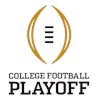Copyright 2017 The Washington Times
All Rights Reserved
The Washington Times
Super Bowl 51 was unlike any other, featuring a historic collapse and unprecedented comeback. The game capped a topsy-turvy NFL season of lackluster TV ratings, uneven play, inconsistent officiating and the usual assortment of issues involving drugs and domestic violence.
However, professional football is part of our national DNA. Even with dips in viewership, NFL games attract as many eyeballs as anything else. Nielsen reports that 172 million people watched at least some portion of Supe 51, making it the most-watched program in television history.
As a multi-billion dollar industry, the NFL is doing fine with a forecast that remains bright for the immediate future. There's too much money at stake for a precipitous drop in commercial interest and fans have invested too much emotionally and reflexively for steep declines in viewing interest.
But pro football is only a sliver of the game. Like an iceberg, the tip can remain intact while pieces break off beneath the surface.
Roughly 1,700 players populate NFL rosters. By comparison, approximately 2.25 million children and youth play football (ages 6 through high school). That's the level where nagging questions are bubbling up, causing us to examine our motivation and enthusiasm for youngsters engaging in the sport.
ESPN analyst and former NFL coach Jon Gruden sees those questions as an affront.
"There are a lot of geniuses out there that are diminishing football right now, Gruden said during USA Football's annual convention, held last month between the Pro Bowl and Super Bowl. "There are a lot of geniuses that are trying to damage the game and ruin the game. Do you feel it?"
Not really. Unless increased safety efforts are nefarious attempts to diminish, damage and ruin the game.
Gruden's dismissiveness of reforms, as well as his derision of education and science, are typical among large swaths of the public. "It's good for them," is a common refrain, a sweeping generalization that ignores evidence to the contrary in many instances.
USA Football, the national governing body for amateur football, understands the worries surrounding football's link to brain trauma and long-term cognitive damage. The organization sees the impact at the start of every season.
"The issue is participation has dropped, and there's a concern among parents about when is the right age to start playing tackle, if at all," Mark Murphy, president of the Green Bay Packers and USAF board member told The New York Times.
According to the Sports and Fitness Industry Association, participation in tackle football by boys ages 6 to 12 has fallen by nearly 20 percent since 2009. Some schools across the country have shuttered their programs due to misgivings about safety and lagging player turnout.
It's a trend that hasn't gone unnoticed by the NFL, which counts on youth programs to develop future participants and fanatics. The league has pumped tens of millions of dollars in USA Football's coffers to promote youth football. "Heads Up Football," a five-year-old ongoing effort to make football less dangerous, will be joined by "modified tackle" next season.
Modifications are fairly stark: a much smaller field; teams of six to nine players; crouches instead of three-point stances; and the elimination of punts and kickoffs.
"There are, legitimately, concerns among parents about allowing their kids to play tackle football at a young age, Murphy said. "So they can look at this and say they'll be more comfortable that it is a safer alternative."
Not to the point of flag football, though, which according to USAF enjoyed an 8.7 percent increase in participation last year. Truth be told, mitigating the potential damage from tackle can only go so far if helmets, pads and high-impact collisions - player-to-player and player-to-ground - remain in place.
I bring your attention again to "Friday Night Tykes," the reality TV series on hyper-competitive programs in Texas. My youngest daughter has been watching and I saw an episode where multiple 12-year-olds were left writhing in pain, some of them crying as they were helped off the field. Many likely have played since they were first-graders.
Medical experts say children's brains are more susceptible to suffering from jarring blows. Studies show that college and pro players who started young, face a greater risk of memory and thinking problems later in life, opposed to players who began after the age of 12.
Whatever lessons football imparts - and I admit the sport teaches some - it's hard to believe they can't be learned some other way. I'm not suggesting the abolition of tackle football, but surely it can be withheld from pre-teens without shredding the nation's fabric.
Bo Jackson and Troy Aikman are among the former greats who say they either wouldn't play again or wouldn't let their children play. A number of other players and coaches have no problem letting their sons strap up and hit someone.
To each his own.
But we don't let kids, say, work in a coal mine just because they might want to. Likewise, I see nothing wrong with putting some restrictions on how and when they can play "real" football.
Gruden can relax. The Super Bowl isn't going away anytime soon.
Brooklyn-born and Howard-educated, Deron Snyder writes for The Washington Times on Tuesdays and Thursdays. Follow him on Twitter @DeronSnyder.
Read More of Today's AB Headlines
Subscribe to Our Daily E-Newsletter
Terms and Conditions Privacy Policy































